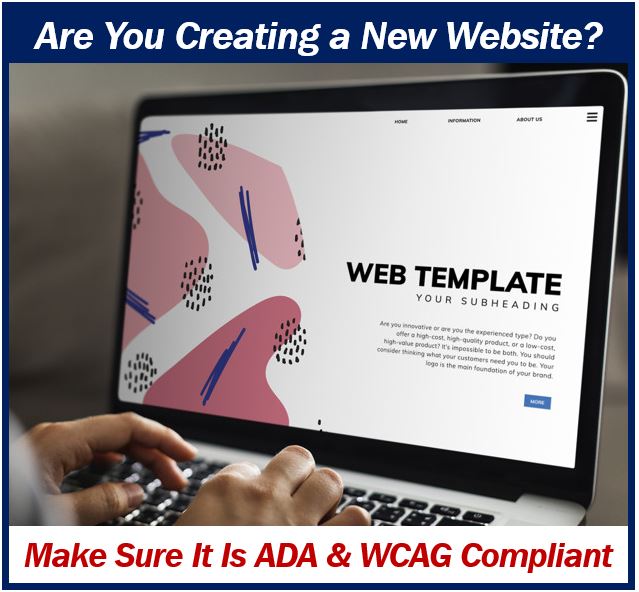In 2018, the Department of Justice (DOJ), made an affirmation that websites are public places of accommodation under ADA Title III. The action was necessary to create awareness on the need to make websites accessible for people with disabilities.
Before that, a vast majority of web owners didn’t put too much thought into ADA and WCAG compliance. This little announcement got every site holder wondering what the future holds for their online business. Compliance benefits you and people with disabilities. Here’s a succinct guide to the ins and outs of ADA and WCAG compliance.

What is ADA?
ADA stands for the Americans with Disabilities Act and it refers to a body that fights for the rights of people living with disabilities (PWDs). The body was launched in 1990.
Back then, their rules mainly touched on making physical places accessible to challenged persons. This includes adding building ramps, elevators, and handicap parking spots in government buildings, schools, hospitals, businesses shopping malls, and any public space. However, as the World Wide Web took off, the ADA thought it wise to include it as a ‘public space’. After all, that is where people spend time looking for information, shopping, catching up with news, you name it.
What is WCAG compliance?
The Web Content Accessibility Guidelines (WCAG) is the set of rules to be followed by website creators to ensure that all people with disabilities get access to websites. Essentially, there are two WCAG standards stipulated by the ADA – WCAG 2.0 and WCAG 2.1. WCAG 2.2 is set to be published this year (2021). All the requirements or success criteria of 2.0 are in 2.1 and those of 2.2 will include criteria in 2.1. This means when you conform to 2.1 requirements, you will have already conformed to 2.0.
In ADA Compliance guidelines are grouped under 4 principles; perceivable, operable, understandable, and robust. Each guideline is tested based on 78 success criteria organized in three levels A, AA, and AAA. A refers to basic accessibility; AA is more advanced and is where all sites should aim for. AAA is top-level and ticks all criteria for people with disabilities.
These include things like better navigation, using the keyboard to surf, utilizing colour and contrast, having alt text on all images, transcribing audio files, and more. To be safe, you need to be WCAG 2.1 AA compliant which details about 50 guidelines.
Benefits of WCAG compliance
WCAG compliance is a lot of work. Is it really worth it? The big answer is yes, it is. Here’s why…
- Increases your target audience: 61 people in the US live with a specific disability. Globally, you are missing out on over 1 billion persons with disabilities. If you are selling products or services, you can reach this market demographic by making your site ADA compliant.
- Increases SEO: Most of the WCAG guidelines are SEO-friendly. Things like using organized your content in an orderly manner, having captions on videos, and utilizing alt text on images score you greatly with search engines. With improved SEO, you are looking at increased traffic to your site and ultimately more profit.
- Better user experience: Internet users appreciate sites that go the extra mile to make it easy to navigate and create multimedia options.
- Morality: Even if all other benefits were to be scraped off, you would be doing humanity good by making sure that challenged persons can access your site.
- You avoid lawsuits: If you don’t meet WCAG2.1 AA guidelines, you are at a greater risk of being sued by a person with disabilities or the ADA. You can pay up to $20,000 for an out-of-court settlement.
If you have a WordPress site in place, you must be asking yourself: Are WordPress websites ADA compliant? The answer is that the WordPress team has worked to ensure that the CMS complies with ACAG guidelines.
However, if you have a third-party theme or plugin, you may not be compliant. In such a case
you can install accessibility plugins update code, or begin all over. But, we would like to
recommend web accessibility plugin expert like “Accessibility Spark” that can help find out
whether your site is WCAG compliant. By installing this plugin you can easy your work as
well as save your brand from potential lawsuits.
There it is – a basic guide to understanding ADA and WCAG compliance. The short of it is that you need to be WCAG 2.1 AA compliant to get all the benefits of compliance. As long as you have a website, this applies to you.

